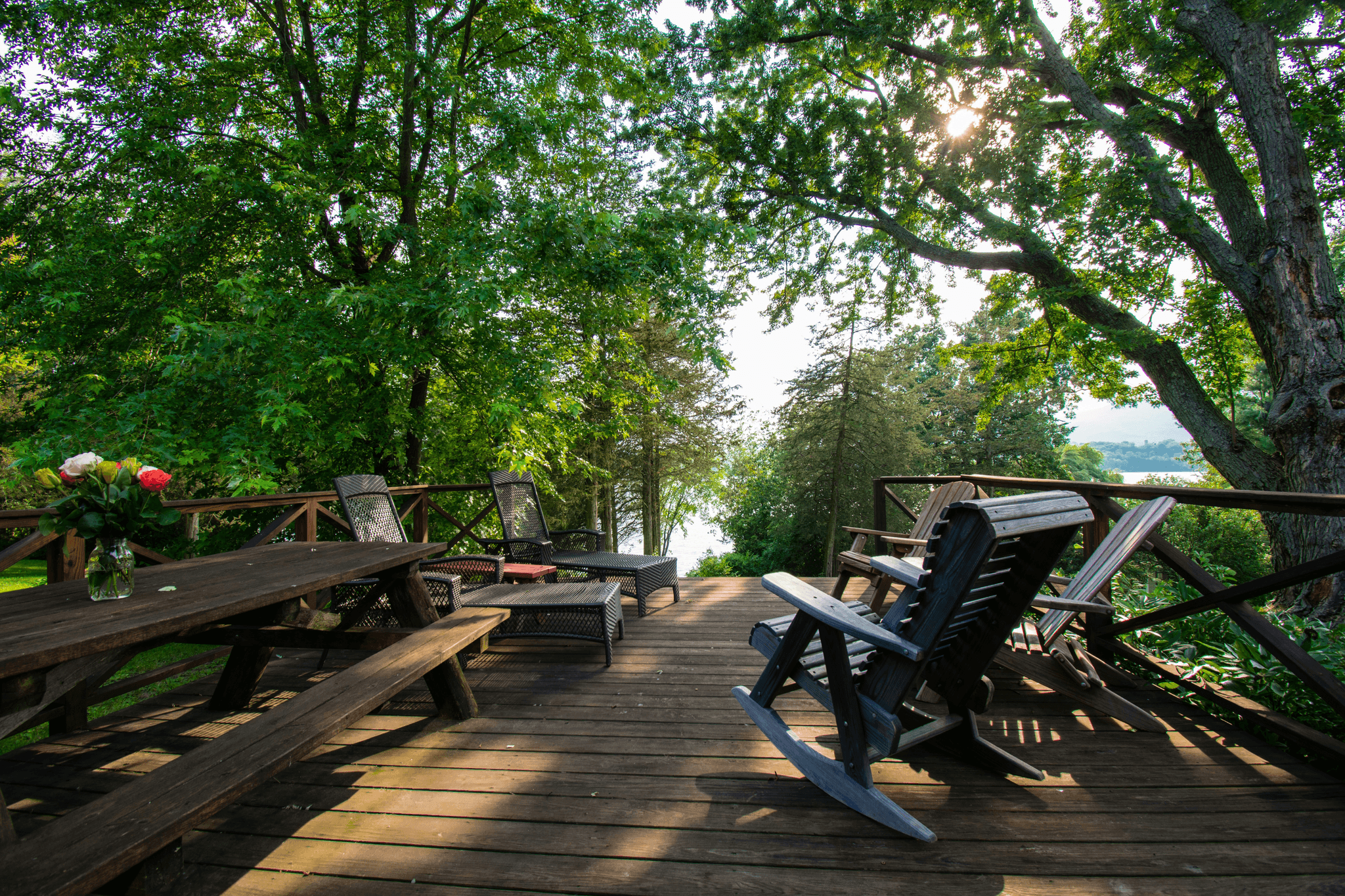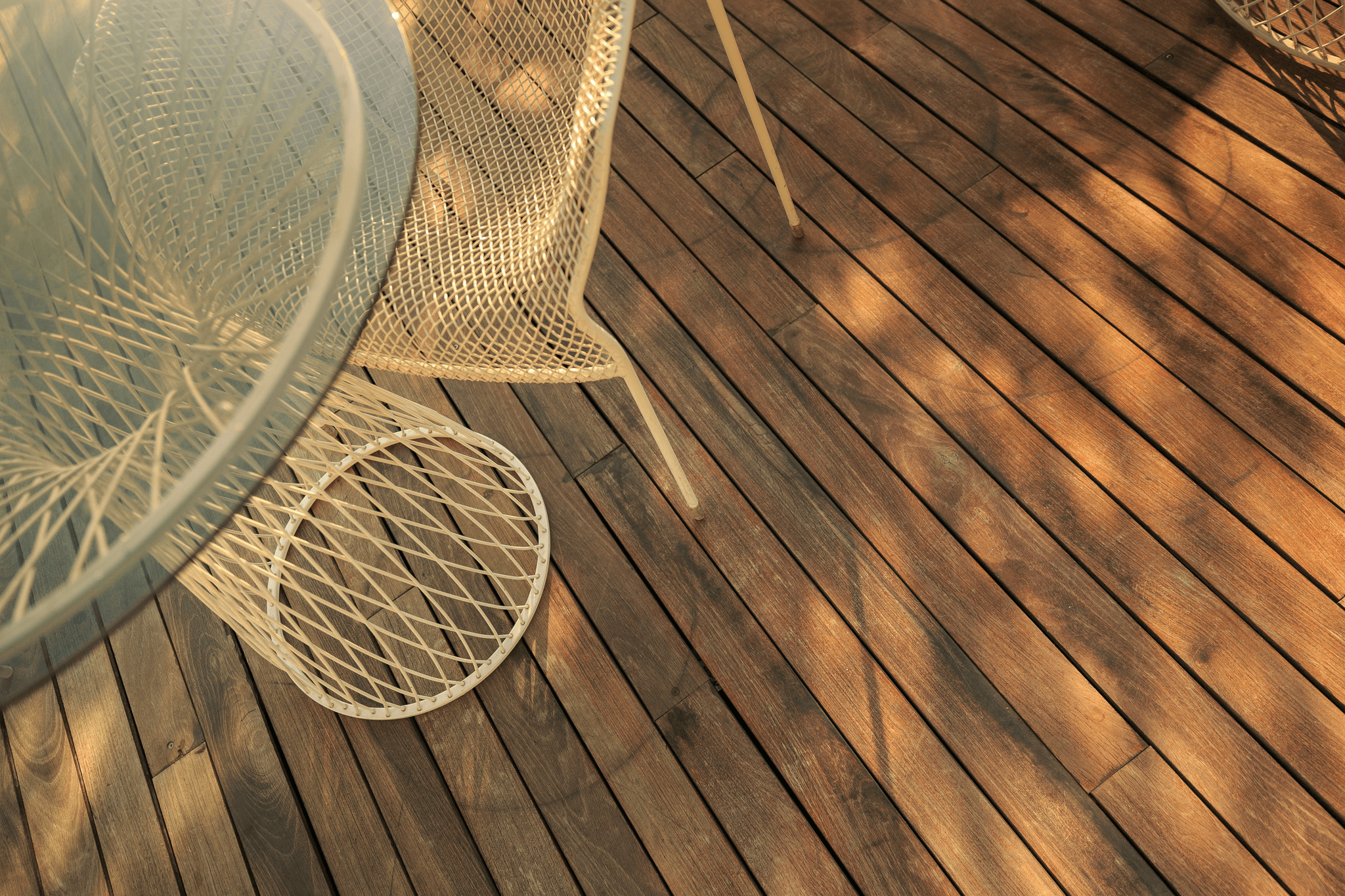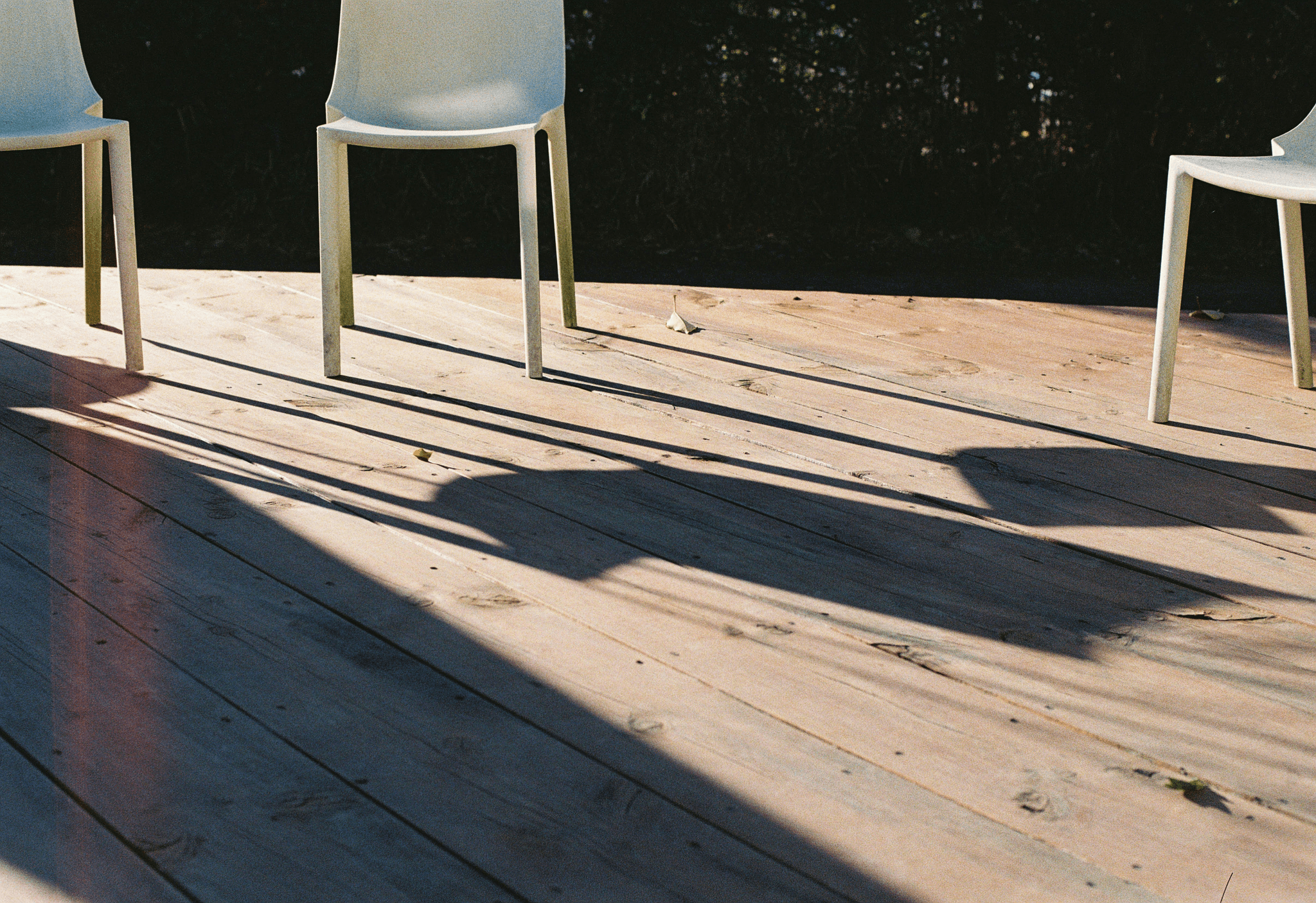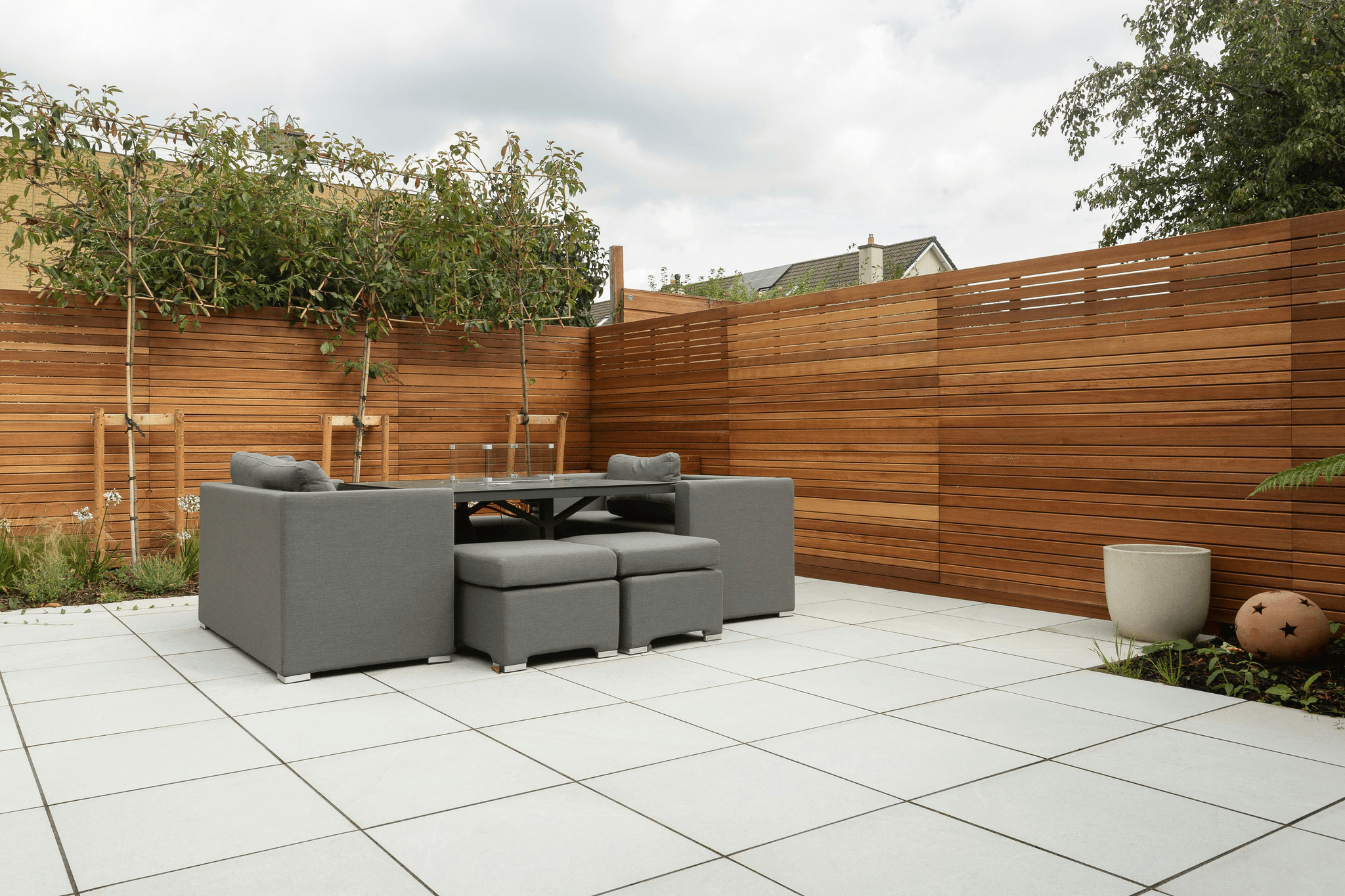Introduction

With summer days heating up, homeowners often wonder how their chosen decking material will perform under the sun's relentless rays. This guide delves into the science behind material decking, particularly composite wood, and explores why heat retention matters for your outdoor oasis.
Understanding WPC Decking and Heat
WPC, or Wood Plastic Composite, is a popular choice in the realm of decking materials due to its durability and aesthetic appeal. However, one aspect that often gets overlooked is how these deck composite decking options behave in high temperatures. Understanding this relationship between WPC decking and heat can help you make informed decisions when selecting your next outdoor decking project.
The Science Behind Material Decking
Material decking encompasses a variety of substances used to create functional yet beautiful outdoor spaces. Composite wood combines recycled plastics with wood fibers, resulting in a product that mimics traditional decking wood while offering enhanced performance characteristics.
Why Heat Matters for Outdoor Spaces
Heat can significantly impact your enjoyment of an outdoor area; no one wants to burn their feet on scorching hot surfaces during a family barbecue! Therefore, understanding how different types of decking materials react to sunlight is essential for creating comfortable environments. Choosing the right deck composite decking not only enhances aesthetic appeal but also ensures that your outdoor space remains inviting regardless of the weather conditions.
What is WPC Decking?

This innovative decking material combines the best of both worlds: the natural beauty of wood and the durability of plastic. The result? A versatile deck composite decking option that stands up to the elements while maintaining an appealing aesthetic.
Definition and Composition
WPC decking is a synthetic material made from a blend of recycled wood fibers and plastic, creating a unique composite wood that offers numerous advantages over traditional materials. The combination typically includes around 50% wood fibers, 30% recycled plastic, and various additives for color and protection against moisture and UV rays. This mixture not only enhances durability but also contributes to its eco-friendliness—making it an attractive choice for environmentally conscious consumers looking for quality decking material.
WPC vs. Traditional Decking Wood
When comparing WPC to traditional decking wood, several factors come into play, including maintenance, longevity, and aesthetics. Unlike natural wood that requires regular staining or sealing to prevent rot and decay, outdoor WPC decking is designed to be low-maintenance; it simply needs occasional cleaning with soap and water. Additionally, while traditional wooden decks may warp or splinter over time due to weather exposure, composite wood remains stable under varying conditions—making it a wise investment for your outdoor space.
Benefits of Composite Wood
Choosing composite wood for your outdoor decking brings a plethora of benefits that can enhance your overall experience as a homeowner. First off, its resistance to fading means you won't have to worry about your beautiful deck losing its luster after just one summer season; it retains its color year after year! Furthermore, many leading decking companies offer warranties on their products due to their confidence in the durability of composite materials—providing peace of mind along with stylish functionality.
Factors Influencing Heat Retention

Color and Material Decking Choices
The color of your deck composite decking plays a significant role in how much heat it absorbs. Darker colors tend to retain more heat compared to lighter shades, which reflect sunlight and keep the surface cooler. Therefore, if you're opting for a material decking that will be exposed to direct sunlight, choosing a lighter hue can make all the difference in comfort levels during hot summer days.
Moreover, the composition of your decking wood can also affect heat retention. Composite wood often combines plastic with wood fibers, leading to varying thermal properties compared to traditional solid wood options. This means that not only does color matter but also the specific type of composite materials used by different decking companies can impact how hot your outdoor WPC decking gets underfoot.
Sun Exposure and Environmental Effects
Sun exposure is another critical factor influencing how hot your outdoor decking becomes throughout the day. Areas with prolonged sunlight will naturally cause any deck composite decking material to heat up more than shaded locations. Additionally, environmental effects such as wind patterns and humidity levels can also contribute to temperature variations on your deck.
Surrounding landscaping plays a role too; trees or structures that provide shade can significantly lower surface temperatures on your outdoor WPC decking. Conversely, decks placed in open areas without protection are likely to experience higher temperatures due to unfiltered sun exposure. Understanding these environmental influences helps homeowners make informed decisions about where and how they install their new composite wood decks.
Installation Techniques and Heat Management
Proper installation techniques are essential for managing heat retention in any outdoor decking project. For instance, leaving adequate gaps between boards allows air circulation underneath the deck composite decking material, which helps dissipate heat buildup effectively. Furthermore, using ventilation systems or cooling mats during installation can significantly reduce surface temperatures over time.
Additionally, some innovative products designed by leading decking companies incorporate reflective surfaces or coatings that help minimize heat absorption right from the get-go. These advanced solutions ensure that homeowners don’t just rely on passive cooling methods but instead take proactive steps toward maintaining a comfortable environment on their decks year-round. By focusing on effective installation strategies alongside smart product choices, you’ll be well-equipped to enjoy your outdoor space without worrying about scalding feet!
Can WPC Decking Get Hot?

Real World Temperature Comparisons
In practical terms, outdoor decking made from WPC can indeed get warm, especially during peak summer months. When compared to traditional decking wood, studies show that composite wood tends to absorb and retain heat differently, often reaching higher temperatures than natural wood options. However, the color and finish of the material decking play significant roles; darker shades tend to heat up more than lighter hues.
For instance, a recent comparison demonstrated that dark-colored WPC decks could reach temperatures upwards of 150°F on a sunny day, while lighter tones hovered around 120°F. This stark difference emphasizes the importance of selecting the right color when choosing your decking material. So if you're considering a new deck from a reputable decking company, keep in mind how those color choices will influence your comfort!
Heat Retention Studies and Findings
Research into heat retention in composite wood has yielded some eye-opening findings that are crucial for anyone investing in outdoor WPC decking. Various studies indicate that while WPC does retain heat more than traditional timber products, advancements in manufacturing techniques have improved its performance over time. For example, many modern deck composite decking products now incorporate cooling technologies designed specifically to mitigate excessive warmth.
One significant study tested multiple types of material decking across different climates and found that while all materials absorbed heat to some degree, those with specialized coatings showed markedly lower surface temperatures throughout the day. This means you can enjoy your outdoor space without worrying as much about burning your feet! Overall, it's clear that informed choices can lead to cooler experiences on your deck.
The Impact of Weather Conditions
Weather conditions undeniably affect how hot outdoor WPC decking can get throughout the year. Factors such as humidity levels and wind speed play pivotal roles; for instance, high humidity may make it feel hotter than it actually is due to moisture retention by the composite wood itself. Additionally, regions with consistent breezes tend to have cooler surface temperatures compared to areas lacking airflow.
Moreover, seasonal variations also influence heat retention; during cooler months or cloudy days, even dark-colored decks are less likely to become uncomfortably hot compared to bright sunny days in summer. Understanding these dynamics allows homeowners to plan their use of outdoor spaces more effectively based on weather forecasts and seasonal changes—ensuring maximum enjoyment from their chosen decking material!
Solutions to Manage Heat in Outdoor Decking

When it comes to enjoying your outdoor space, managing heat on your deck is crucial, especially with WPC decking. Fortunately, there are several strategies you can employ to keep your outdoor WPC decking comfortable and inviting. From color choices to landscaping techniques, these solutions will help maintain a pleasant atmosphere for all your outdoor activities.
Choosing the Right Color and Finish
The color of your decking material plays a significant role in heat retention. Darker shades of composite wood tend to absorb more sunlight, leading to higher temperatures on the surface of the deck composite decking. Opting for lighter colors can help reflect sunlight and keep your decking wood cooler during hot summer days.
In addition to color, the finish of your outdoor decking can also impact its temperature. A matte finish may absorb less heat than a glossy one, making it a better choice for those looking for cooler surfaces underfoot. By carefully selecting both the color and finish of your material decking, you can create an inviting space that doesn't scorch your feet.
Lastly, consider the overall design of your deck when choosing colors and finishes. Collaborating with a reputable decking company can provide insights into which combinations work best in terms of aesthetics and functionality while ensuring that you have an enjoyable experience on your outdoor WPC decking.
Using Shade and Landscaping Tricks
Creating shade around your outdoor WPC decking is one of the most effective ways to manage heat. Strategically placing trees or installing pergolas can provide natural cover that keeps direct sunlight at bay while enhancing the beauty of your outdoor space. Additionally, using shade sails or umbrellas offers flexibility in creating shaded areas whenever needed.
Incorporating landscaping elements such as tall plants or shrubs near your deck can also help mitigate heat retention from sun exposure. These natural barriers not only provide shade but contribute to a more inviting atmosphere by adding greenery around your composite wood structure. Consider incorporating climbing vines along trellises or fences for added aesthetic appeal while blocking out some harsh rays.
Moreover, it's essential to think about hardscaping features like stone paths or patios adjacent to your deck composite decking area that remain cool underfoot compared to traditional materials like concrete or asphalt. This thoughtful approach allows you to enjoy every corner of your outdoor space without worrying about burning hot surfaces when you're entertaining guests or relaxing alone.
Proper Ventilation Techniques
One way homeowners can achieve proper ventilation is by elevating their decks slightly above ground level during installation—this allows air circulation underneath while keeping water runoff away from sensitive areas like support beams and joists made from traditional materials often susceptible to rot over time if not properly managed.
Additionally, incorporating gaps between boards during installation promotes airflow across all surfaces effectively so that even direct sunlight does not result in excessive temperatures on hot days spent outdoors lounging on quality material decking surfaces! By prioritizing ventilation techniques when planning out how you'll enjoy those sunny afternoons outside among friends or family members alike!
Top WPC Decking Brands and Products

When it comes to selecting the best outdoor WPC decking, understanding the leading brands and their offerings is crucial. The market is flooded with options, each boasting unique benefits and features that cater to different preferences. Here, we’ll explore some top contenders in the deck composite decking arena, providing insights into their strengths and what sets them apart.
Composite Decking Inc Overview
Composite Decking Inc is a prominent player in the world of decking materials, specializing in high-quality outdoor WPC decking solutions. Their products are crafted from a blend of recycled wood fibers and plastic, resulting in durable and low-maintenance decking wood that can withstand various weather conditions. With a focus on sustainability, this decking company prides itself on offering eco-friendly alternatives without compromising on style or performance.
One of the standout features of Composite Decking Inc is its extensive range of colors and textures available for their material decking options. This variety allows homeowners to customize their outdoor spaces while ensuring longevity against fading or warping. Additionally, they provide excellent warranties on their products, giving consumers peace of mind when investing in composite wood for their decks.
Reviews of Popular Decking Materials
When diving into reviews of popular material decking options from various companies, it's essential to consider both customer feedback and expert opinions alike. Many users rave about the low maintenance required with composite wood compared to traditional wooden decks—no sanding or staining necessary! This aspect alone makes it appealing for busy homeowners looking for a hassle-free outdoor space.
Another common highlight among reviews is how well these materials perform under heat retention studies; many brands have developed products that resist excessive heat buildup even under direct sunlight exposure—a critical factor when choosing your ideal outdoor WPC decking solution! However, some customers have noted variations in color fade over time depending on environmental conditions; thus it’s vital to select reputable brands with proven track records.
In conclusion, exploring different brands like Composite Decking Inc alongside Trex and TimberTech can help you make an informed decision about your next deck composite decking investment. With numerous options available today—from color selections to performance capabilities—finding the right combination will ensure your outdoor space remains stylish yet functional for years ahead!
Conclusion

In wrapping up our exploration of outdoor WPC decking and its heat dynamics, it’s clear that understanding the nuances of material decking is essential for making informed choices. Composite wood offers a modern alternative to traditional decking wood, but the heat retention characteristics can vary significantly based on several factors. As we’ve seen, considerations like color, exposure to sunlight, and installation techniques play crucial roles in how hot your deck can get underfoot.
Summarizing WPC Decking Heat Insights
WPC decking has proven to be a popular choice among homeowners looking for durable and low-maintenance outdoor decking options. However, it’s important to recognize that not all composite decking materials behave the same way when it comes to heat retention. Our findings highlighted that while some colors and finishes can mitigate heat absorption, others may lead to uncomfortably hot surfaces during peak sun hours.
Practical Solutions for Comfortable Decking
To ensure a comfortable experience on your deck composite decking, consider selecting lighter colors that reflect rather than absorb heat. Incorporating shade elements like umbrellas or pergolas can also provide relief from the sun's harsh rays while enhancing your outdoor space's aesthetic appeal. Lastly, proper ventilation techniques during installation can help reduce heat buildup beneath your material decking.
Final Thoughts on Outdoor Decking Choices
Choosing the right outdoor WPC decking involves balancing aesthetics with practicality—especially regarding temperature management. By understanding how different factors influence heat retention in composite wood products, you’ll be better equipped to select a solution that meets both your comfort needs and style preferences. Ultimately, investing time in research will pay off in creating an inviting outdoor space where you can relax without the worry of burning feet!
